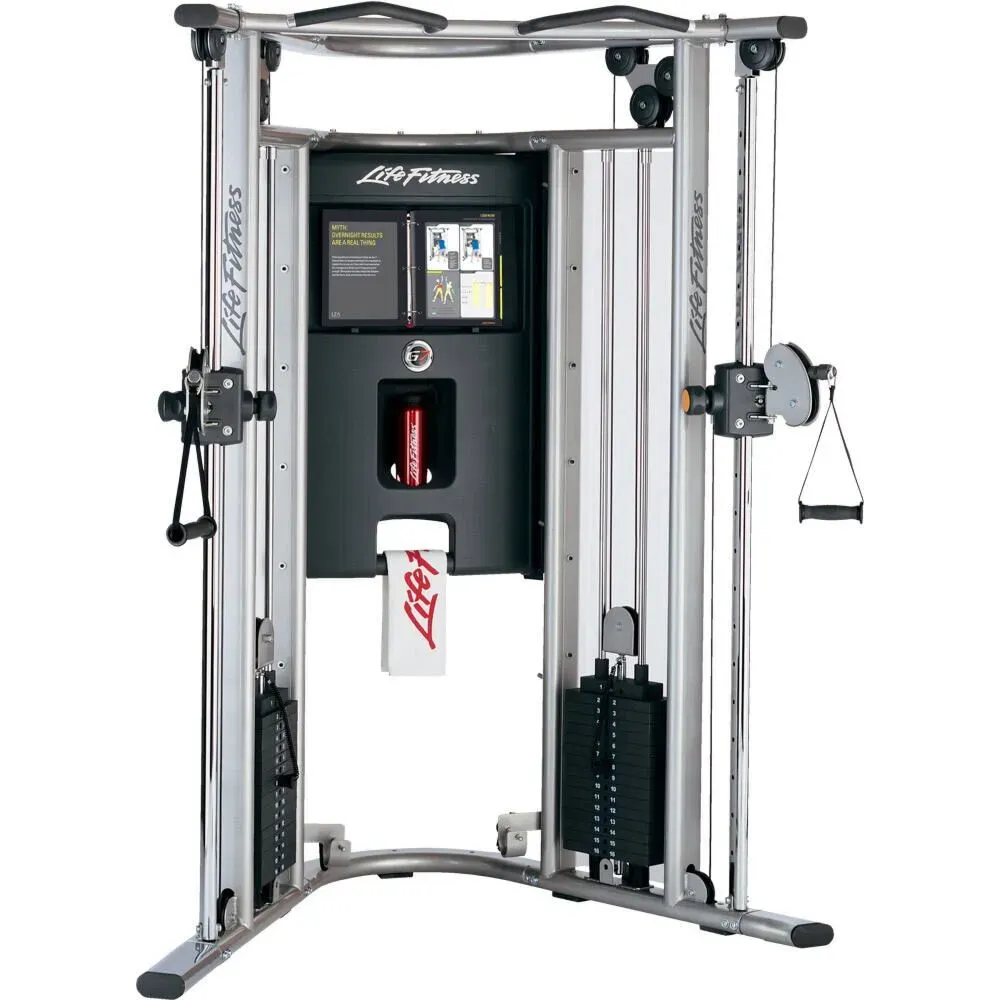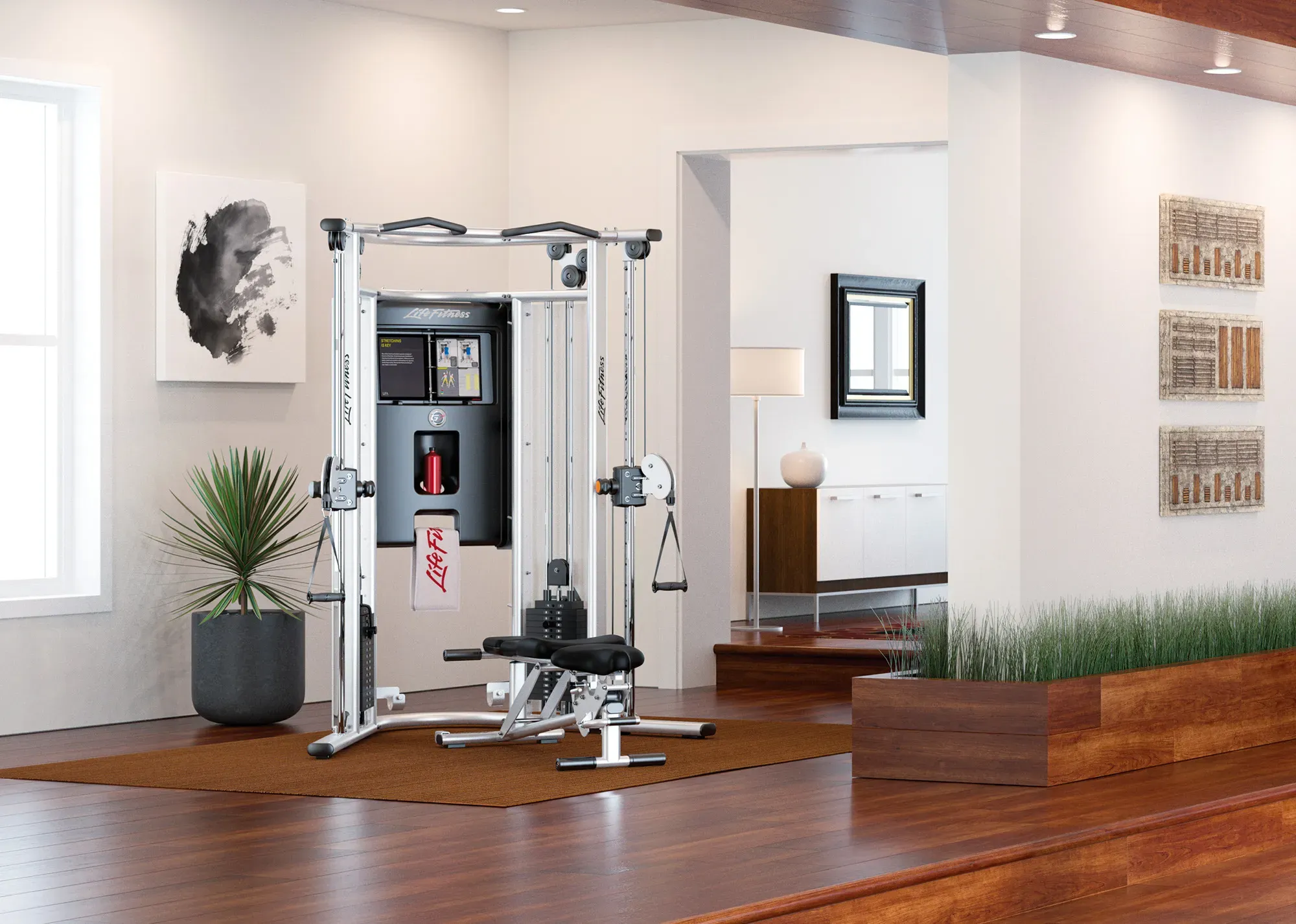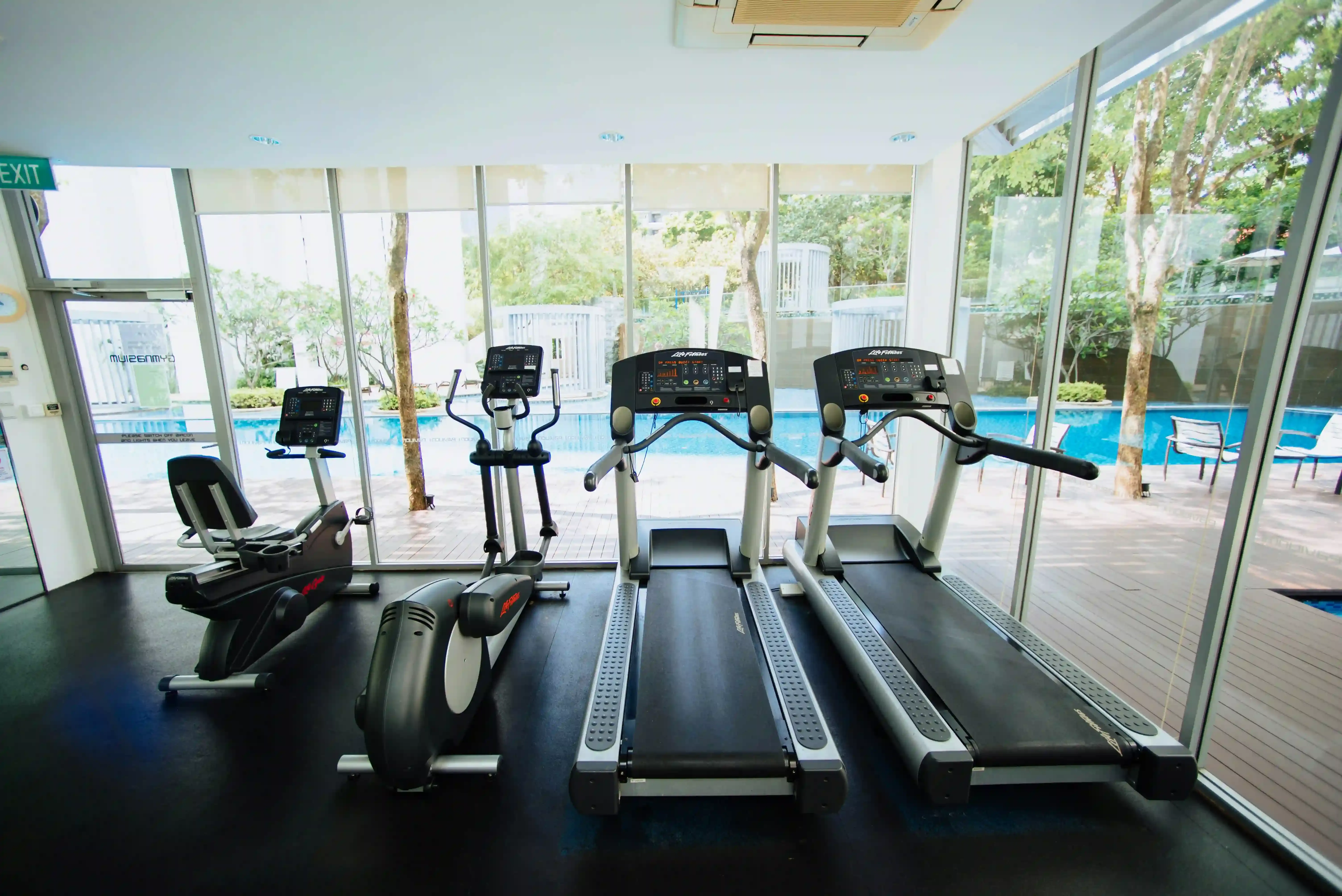Table of Contents
Tired of battling gym crowds or finding yourself short on time to commute? Maybe you've considered building your own workout sanctuary but feel overwhelmed by the sheer volume of options out there. It's a common spot to be in. You want equipment that lasts, performs, and doesn't become an expensive clothes rack in six months. That's where the conversation often turns to commercial-grade gear for the home. Specifically, many serious fitness enthusiasts look at home gym equipment Life Fitness offers.
Why Life Fitness Stands Out for Home Gym Equipment
Why Life Fitness Stands Out for Home Gym Equipment
Built Like a Tank, Not a Toy
Look, let's cut to the chase. When you're dropping serious cash on fitness gear for your home, you don't want something that feels like it's going to wobble apart after a few months. You want a workhorse. This is where Life Fitness enters the chat, often stomping in with steel-toed boots. Their reputation isn't built on flimsy, foldable gadgets you stash under the bed. It comes from equipping actual gyms, the kind that see hundreds of sweaty bodies pounding on machines eight hours a day. That commercial heritage translates directly to their home line. We're talking heavy-duty frames, components designed to withstand serious abuse, and finishes that don't chip off if you look at them funny. It’s the difference between a plastic toy car and a reinforced pickup truck.
More Than Just Muscle: Smart Design and Tech
so durability is key, but it's not just about being able to survive a small earthquake. Life Fitness also puts thought into how the equipment actually feels and functions. Think about the ergonomics – how it fits your body, how smooth the movements are. There's a reason why their ellipticals feel less like you're riding a wonky bicycle and more like you're gliding. They invest in research and design, often incorporating feedback from actual gym users and trainers. Plus, in this day and age, connectivity matters. Many of their newer pieces, even for home, integrate with apps, track your progress meticulously, and offer on-demand workouts. It's not just iron and steel; it's iron, steel, and a brain.
- Commercial-grade construction
- Designed for heavy, frequent use
- Focus on ergonomic movement
- Integrated technology and connectivity
- Strong brand reputation from gym settings
A Lineup That Covers (Almost) Everything
Walk into a decent commercial gym, and you'll see a full spectrum of Life Fitness gear – cardio machines lined up like soldiers, strength equipment filling the floor. They haven't forgotten this range when it comes to home use. You're not just stuck with one type of machine. Need a solid treadmill? They've got options. Want a multi-station home gym that can hit every major muscle group? Check. Looking for something more specific like a cable motion system? Yep, they have those too. This breadth of offering means you can often build out a comprehensive home gym setup using equipment from a single, trusted brand, ensuring consistency in quality and feel across your entire workout space. It’s like building a LEGO set where all the pieces actually fit together perfectly.
Exploring the Range of Life Fitness Home Gym Equipment
Exploring the Range of Life Fitness Home Gym Equipment
so what exactly are we talking about when we say Life Fitness offers a "range" for your home? It's more than just a single multi-gym tucked in a corner. They bring their commercial playbook home, meaning you can find serious cardio machines like treadmills and ellipticals built to handle miles, not just sprints to the fridge. Then there's the strength side: selectorized weight stacks on dedicated machines, functional trainers with adjustable pulleys for versatile movements, and even robust benches and racks if you're more into free weights. They haven't forgotten the accessories either – think durable mats, battle ropes, maybe even some fancy resistance bands that won't snap mid-stretch. The idea is to replicate a full-gym experience without needing a membership or dealing with someone else's sweat.
Popular Life Fitness Home Gym Models: What to Look For
The All-Stars: G7 and G4 Home Gyms
Alright, so you're thinking about pulling the trigger on some serious home gym equipment Life Fitness makes. If you're picturing a classic multi-station setup, the G7 and G4 models usually pop up first. The G7, often highlighted, is their dual-adjustable pulley system. Think cable crossovers, rows, presses – the kind of versatile movements you see people doing in the free-motion areas of big gyms. It’s designed to give you a massive range of motion and hit muscles from different angles. The G4 is more of a traditional single-stack multi-gym, offering guided movements for bench press, lat pulldowns, leg extensions, and the like. It's solid, reliable, and a good entry point if you want a structured workout without needing multiple pieces of equipment right away. Choosing between them often comes down to space and whether you prefer free-motion cables or fixed-path movements.
Beyond the Stack: Functional Trainers and Cardio Complements
But Life Fitness for home isn't just about weight stacks. Their functional trainers, like the ones based on their commercial models, offer incredible versatility if you have the space and budget. These are essentially souped-up cable machines that allow for hundreds of exercises. Then there are the cardio pieces that often complete a Life Fitness home setup. While not strictly "home gym equipment" in the strength sense, a durable Life Fitness treadmill or elliptical is a common partner. People often pair a G4 or G7 with a F3 or T4 treadmill, for example. It creates a more complete workout environment. You get the strength training covered, plus the ability to warm up properly or crush some cardio without stepping outside.
What's your primary fitness goal? Strength, cardio, or a mix? Knowing this helps narrow down which Life Fitness models make the most sense for your space and wallet.
Key Features to Evaluate Before Buying
When you're looking at these popular Life Fitness models, don't just glance at the price tag. Dig into the details. How much space does it actually require? The G7, for instance, needs clearance around it for those cable movements. What's the maximum weight resistance? Make sure it aligns with your current and future strength levels. Check the build materials – is it heavy-gauge steel? Look at the pulley system quality; smooth operation is key. Consider the upholstery on benches – it should be durable and comfortable. Also, think about the included accessories. Does it come with the handles and bars you'll need, or is that extra? These aren't minor points; they dictate the longevity and usability of the equipment you're investing in.
The Durability and Quality of Life Fitness Equipment for Your Home
The Durability and Quality of Life Fitness Equipment for Your Home
Built to Withstand the Grind
let's talk turkey about why shelling out for home gym equipment Life Fitness makes sense from a durability standpoint. This isn't furniture you occasionally dust. This is gear designed to be pushed, pulled, lifted, and sweated on, day in and day out. Life Fitness doesn't skimp on the raw materials. They use heavy-gauge steel for frames, the kind that feels solid and doesn't flex when you're racking heavy weight. Bearings are commercial-grade, meaning they'll handle smooth movements for years, not seize up after a few hundred reps. The cables on their strength pieces? Often aircraft-grade, built to handle thousands of pounds of tension over their lifespan. It’s over-engineered, frankly, but that’s exactly what you want when your safety and investment are on the line.
Tested Beyond Reason
How do you know it lasts? Because Life Fitness puts their equipment through the wringer before it ever gets to your home. They have testing protocols that mimic years of heavy commercial use in condensed timeframes. Think machines running non-stop, weight stacks cycling thousands upon thousands of times, surfaces being scrubbed and impacted. They're not just hoping it holds up; they're actively trying to break it in controlled environments to ensure it can handle the real-world abuse of a busy gym, let alone your garage or spare room. This rigorous testing is a major factor in their equipment's reputation for longevity. It's the difference between a product designed to meet minimum standards and one built to exceed them significantly.
- Heavy-gauge steel frames
- Commercial-grade bearings and pulleys
- Durable, high-tensile cables
- Abrasion-resistant upholstery
- Rigorous factory testing protocols
The Feel of Quality, Day After Day
Beyond just not breaking, there's the subjective feel of quality that durable equipment provides. A Life Fitness machine doesn't rattle or shake under load. The weight stack movement is smooth and quiet, the pivot points operate without sticking, and the adjustments click into place with authority. This consistent, reliable performance isn't just about convenience; it contributes to safer, more effective workouts. You're not compensating for shaky equipment; you're focusing on the exercise itself. That feeling of solid engineering pays dividends over time, making your home gym a place you actually look forward to using, rather than a frustrating collection of wobbly parts.
Designing Your Home Gym Space with Life Fitness Gear
Designing Your Home Gym Space with Life Fitness Gear
Mapping Out Your Fitness Footprint
Alright, you've got the idea, maybe even picked out a specific piece of home gym equipment Life Fitness offers. Now, where the heck does it go? This isn't like finding a spot for a new lamp. Fitness gear, especially the solid stuff from Life Fitness, takes up real estate, and you need to be smart about it. First step: measure. Measure the room, measure the doorways, measure the ceiling height. That G7 functional trainer might look sleek online, but if it won't fit through your basement door or leaves you with zero room to actually *use* the cables, you've got a very expensive paperweight. Think about the clearance needed around machines too – you don't want to punch a wall doing a chest fly. Sketch it out, use masking tape on the floor, whatever helps you visualize the layout before the delivery truck shows up.
Placement Isn't Just Practical, It's Psychological
Beyond just fitting the equipment, where you put it matters for your motivation. Sticking your nice Life Fitness treadmill in a dark, dusty corner next to the furnace might not inspire daily runs. Can you place it near a window? Near a TV? In a spot where you won't constantly trip over other stuff? Also, consider the floor. Heavy equipment needs a solid base. Concrete is ideal, but if you're on wood floors, you'll absolutely need protective mats to avoid dents and scratches. Noise can be a factor too; putting a heavy weight stack machine directly over someone's bedroom might not win you any family popularity contests. Think about workflow – where do you put dumbbells if you're using a bench? Where does the jump rope go? A well-designed space makes working out less of a hassle and more of a habit.
- Measure your space accurately (length, width, height).
- Account for clearance needed *around* the equipment during use.
- Plan for delivery access (doorways, stairs).
- Consider floor protection (mats for heavy items).
- Optimize placement for motivation and workflow.
- Think about ventilation and lighting.
Making the Investment in Life Fitness Home Gym Equipment
Making the Investment in Life Fitness Home Gym Equipment
The Price Tag: More Than Just Numbers
Let's address the elephant in the room right away: home gym equipment Life Fitness makes isn't cheap. You're not walking into a big box store and grabbing a $300 multi-gym. You're looking at figures that can easily run into the thousands, sometimes tens of thousands, depending on what you need. This isn't an impulse buy; it's a significant financial commitment. But here's the kicker: you're paying for that commercial-grade build, the rigorous testing, and the reputation for equipment that lasts. Compare the lifespan of a Life Fitness piece to a budget alternative that might need replacing in 3-5 years, or the cumulative cost of a gym membership over a decade. When you frame it that way, the initial sticker shock starts to look less like an expense and more like a long-term investment in your health and convenience.
Is It Worth It? Calculating the Return
So, beyond just lasting forever (or close to it), what's the actual return on this investment? Convenience is huge. No commute time, no waiting for machines, no judging glances if you're trying a new exercise. Your gym is always open, always clean (hopefully), and always stocked with the gear you need. This accessibility often translates to more consistent workouts. A home gym removes a lot of the common excuses for skipping a session. Over time, that consistency compounds into real fitness progress and health benefits. Plus, consider the potential savings on gas, gym memberships, and maybe even less fast food because you're heading straight home to train. The value isn't just in the metal and plastic; it's in the lifestyle shift and the consistent opportunity to train effectively on high-quality gear.
- Initial cost is high, reflecting commercial quality.
- Long-term value often outweighs cheaper alternatives or gym fees.
- Convenience drives workout consistency.
- Eliminates commute time and waiting for equipment.
- Provides a private, dedicated training space.
- Potential for significant return on investment in health and time.
Where to Find and Purchase Life Fitness Equipment
Where to Find and Purchase Life Fitness Equipment
Buying Direct or Through Authorized Dealers
so you've decided the robust nature of home gym equipment Life Fitness offers is what you need. Great. Now, where do you actually swipe the card? The most straightforward path is often going direct to the Life Fitness website. They have a dedicated home fitness section, and while it might not showcase every single commercial piece, they list the models specifically designed or adapted for residential use. Buying direct gives you access to their full range, warranty information, and often, their own financing options and installation services. Alternatively, Life Fitness works with a network of authorized dealers. These aren't your average sporting goods stores. They're typically specialty fitness retailers who know their stuff, can offer personalized consultations, help with space planning, and often have floor models you can actually touch and try out. This can be invaluable when you're investing in a large piece of machinery. Just make sure they are *authorized* dealers to ensure you get the genuine article and valid warranty.
Exploring the Used and Refurbished Market
Let's be real, the price tag on brand new Life Fitness gear can make your eyes water. But their durability works in your favor on the secondary market. Because this stuff is built to last, a used piece of home gym equipment Life Fitness made might still have years, even decades, of life left in it. Look at reputable used fitness equipment dealers who specialize in commercial brands. They often acquire gear from gyms that are upgrading or closing, refurbish it, and sell it at a significant discount. Craigslist and other local marketplaces are also options, but buyer beware – you're often buying as-is with no warranty, and you need to be able to inspect the equipment thoroughly yourself or bring someone who can. Refurbished equipment from Life Fitness or authorized dealers is often a sweet spot, offering a lower price than new but with some level of warranty and assurance that it's been checked over.
When considering used equipment, are you comfortable inspecting for wear and tear, or would the peace of mind from a warranty on refurbished gear be worth the extra cost?
Maintaining Your Life Fitness Home Gym Setup
Maintaining Your Life Fitness Home Gym Setup
Keeping it Clean: The First Line of Defense
So, you've invested in some serious home gym equipment Life Fitness provides. It's sitting there, looking solid. But even a tank needs a wash and check-up now and then. Sweat is corrosive, dust gets into everything, and grime builds up. The absolute simplest, most crucial maintenance step is wiping down your equipment after every single use. A mild soap and water solution or a dedicated gym equipment cleaner works wonders. Pay special attention to handles, seats, and any surfaces you touch frequently. This isn't just about hygiene; it prevents rust, keeps upholstery from degrading, and stops gunk from interfering with moving parts. Think of it as tucking your expensive gear into bed properly after a hard day's work.
Checking the Guts: Cables, Pulleys, and Fasteners
Beyond a simple wipe-down, you need to periodically inspect the working parts. For any strength equipment with cables and pulleys (like the G7 or G4), check the cables for fraying or kinking. Run a cloth along the length – if it snags, you've got a problem brewing. Look at the pulleys; they should spin freely and smoothly. If they're squeaking or sticking, they might need lubrication or have an issue. Bolts and fasteners can loosen over time with vibration and use. Grab a wrench and just give everything a quick check to ensure it's snug, but don't overtighten. This prevents annoying wobbles and, more importantly, potential safety hazards. A little proactive tightening now saves you a headache (or worse) later.
- Wipe down surfaces after every workout.
- Inspect cables for fraying or kinks monthly.
- Check pulleys for smooth, quiet operation.
- Tighten bolts and fasteners periodically.
- Lubricate pivot points and guide rods as recommended by the manual.
Electronics and When to Call for Backup
If your home gym equipment Life Fitness includes cardio pieces or strength machines with electronic consoles, these need attention too. Keep the screens clean using a non-abrasive cleaner suitable for electronics. Ensure power cords aren't pinched or damaged. If a console starts acting glitchy, displaying errors, or buttons stop responding, check the basics like power connections. Often, these issues require a bit more technical know-how. Life Fitness equipment is complex under the hood. While routine cleaning and mechanical checks are homeowner-friendly, don't hesitate to consult the user manual for troubleshooting specific issues. For anything beyond basic fixes, or if you notice significant wear or a change in how a machine feels, calling an authorized Life Fitness technician is usually the smartest move. Trying to DIY a complex repair might void your warranty or cause more damage. Sometimes, admitting you need a pro is part of responsible ownership.
Is the squeak coming from the pulley just annoying, or is it a sign of impending failure?
RealWorld Experiences with Life Fitness in a Home Setting
RealWorld Experiences with Life Fitness in a Home Setting
Beyond the Brochure: The Daily Grind
So, you've seen the glossy photos and read the specs. The Life Fitness home gym equipment looks fantastic in a perfectly lit room with zero sweat stains. But what's it like when it's actually *your* equipment, day in and day out? The reality is, it holds up. I've seen G4s that are a decade old still operating smoothly because they were built for abuse. People aren't just using these things for gentle stretching; they're lifting heavy, doing circuits, putting miles on the treadmills. The complaints you hear aren't usually about structural failure or parts breaking easily. They're more often about the initial assembly being a beast, or maybe a console glitching years down the line, which, let's be honest, happens with tech. The core machinery performs as advertised – it's solid, stable, and feels like the real deal because it pretty much is.
The Long Haul: Is the Investment Paying Off?
For most folks who commit to home gym equipment Life Fitness provides, the consensus seems to be that the upfront cost stings, but the long-term payoff is real. You hear stories about people who stopped going to the gym because of time constraints or social anxiety, and having this level of equipment at home completely reignited their fitness routine. It’s not just about having the gear; it’s about removing barriers. The convenience factor is immense, and for many, that consistent access translates directly into achieving fitness goals they couldn't hit otherwise. Sure, there's the odd person who didn't use it as much as they thought they would (you can't buy motivation, sadly), but for those who are serious, the durability and performance make it a central, reliable part of their life for years.
What's the biggest hurdle you face with your current workout routine?
Worth the Weight? Final Thoughts on Life Fitness Home Gyms
So, is dropping serious cash on home gym equipment Life Fitness makes the right move for you? It boils down to your goals, space, and frankly, your budget. This isn't budget gear; it's built to take a beating, day in and day out, just like the machines in your local health club. You're paying for durability, engineering, and a certain level of performance consistency. While it won't magically grant you superhero strength, having reliable, high-quality equipment readily available eliminates another excuse to skip a workout. Consider it a long-term lease on convenience and quality, provided you actually use it.